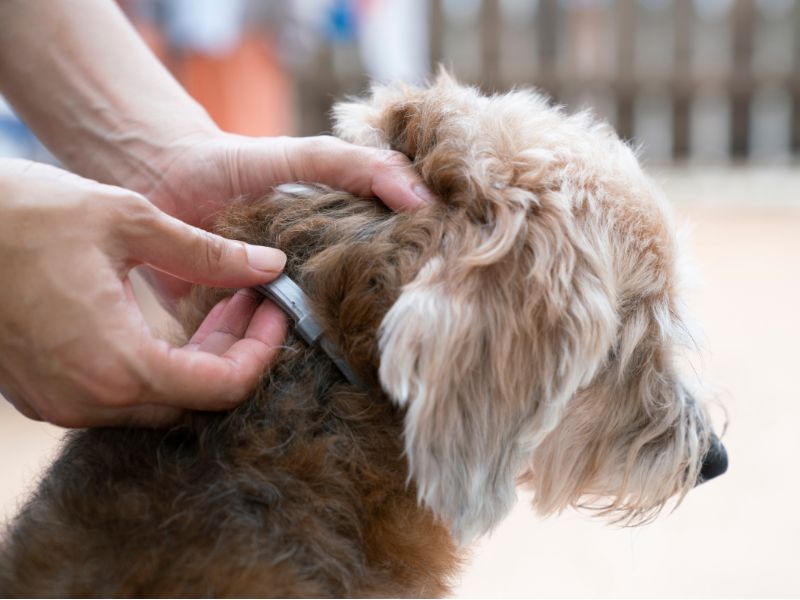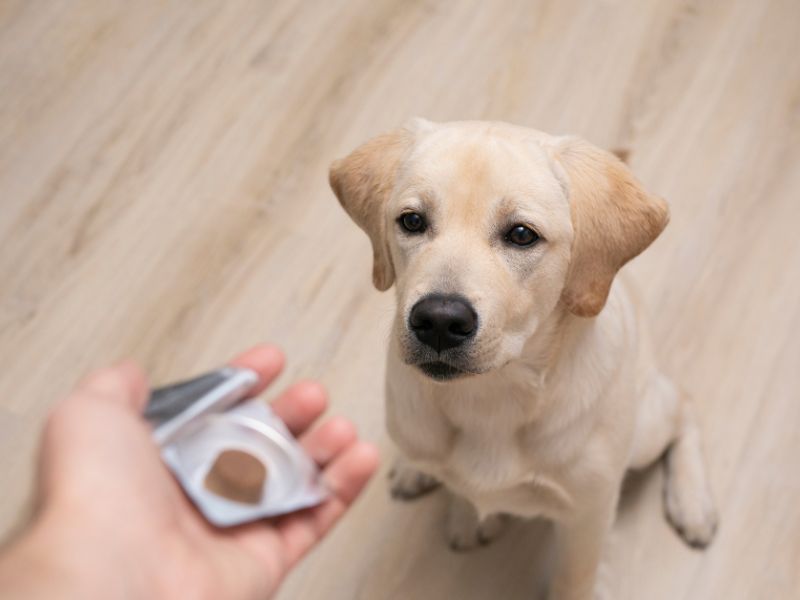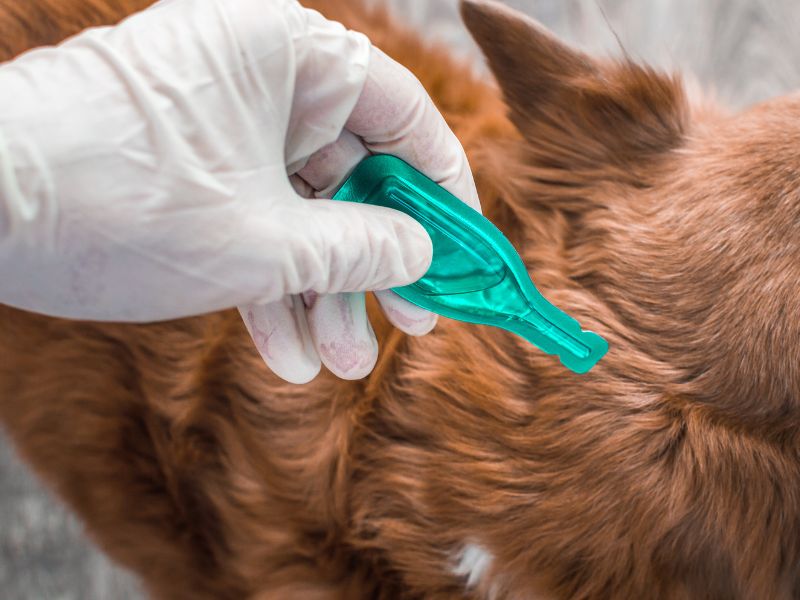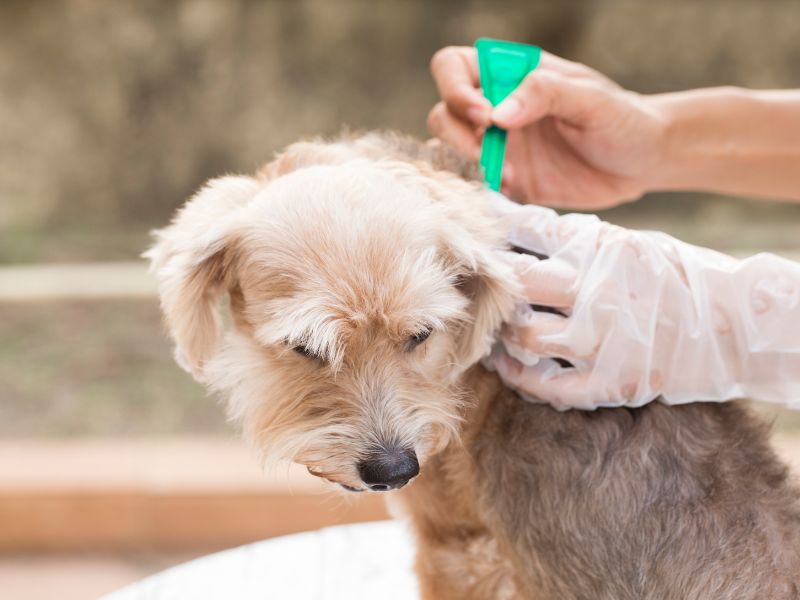Are you a dog owner who is constantly worried about your furry friend’s health and well-being? If so, you’re not alone. One of the most common concerns among dog owners is how to prevent and treat fleas and ticks. These tiny parasites can wreak havoc on your dog’s health, causing discomfort, itching, and even transmitting diseases. But fear not, because in this article, we’ll uncover the best methods to keep your dog flea and tick-free. From preventive measures such as regular grooming and using flea collars, to effective treatments like topical medications and oral preventives, we’ll explore a range of options to suit every dog owner’s needs. With our expert advice and practical tips, you’ll have the knowledge and tools to protect your beloved canine companion from these pesky pests, ensuring they stay happy, healthy, and itch-free all year round. So let’s dive in and discover the ultimate guide to preventing and treating fleas and ticks in dogs!
Importance of Flea and Tick Prevention
Fleas and ticks are not just annoying pests; they can pose serious health risks to your dog. Fleas can cause intense itching, allergies, and even lead to anemia in severe cases, especially in puppies or dogs with compromised immune systems. Ticks, on the other hand, can transmit dangerous diseases such as Lyme disease, Rocky Mountain spotted fever, and Ehrlichiosis. Prevention is always better than cure when it comes to these parasites, so it’s crucial to take proactive measures to keep your dog safe and healthy.
Regularly inspecting your dog for fleas and ticks is essential. Look for signs like excessive scratching, redness, and the presence of tiny black dots on your dog’s skin or in their bedding. These black dots are flea feces, which are a sure sign of an infestation. Additionally, be on the lookout for any unusual behavior or symptoms that could indicate tick-borne diseases, such as lethargy, fever, or joint pain. The earlier you catch an infestation or disease, the easier it is to treat.
Understanding Fleas and Ticks
Before we dive into prevention and treatment methods, let’s take a closer look at what fleas and ticks are and how they affect dogs. Fleas are small, wingless insects that feed on the blood of mammals, including dogs. They have strong hind legs that allow them to jump from host to host, making them highly contagious. Ticks, on the other hand, are arachnids that attach themselves to a host and feed on their blood. They can be found in tall grass, shrubs, and wooded areas, waiting for a suitable host to pass by.
Both fleas and ticks can multiply rapidly and infest your dog’s environment, making it essential to tackle the problem promptly. Female fleas can lay up to 50 eggs per day, while ticks can lay thousands of eggs at a time. This means that even if you manage to remove the adult parasites from your dog, there could still be eggs, larvae, or nymphs waiting to hatch and reinfest your pet and home.
Signs of Flea and Tick Infestation in Dogs
Identifying a flea or tick infestation early is crucial for effective treatment. Some common signs of infestation include:
- Excessive scratching: If your dog is constantly scratching, biting, or licking themselves, it could be a sign of fleas or ticks.
- Hair loss or redness: Flea infestations can cause hair loss, particularly around the tail, hindquarters, and belly. Ticks may cause redness or inflammation at the site of attachment.
- Visible parasites: Fleas are small, dark brown insects that can be seen crawling on your dog’s fur. Ticks, on the other hand, are larger and can be felt as small bumps on the skin.
- Flea dirt: Flea dirt, which looks like tiny black dots, is flea feces and is a reliable sign of an infestation. You can confirm its presence by placing some flea dirt on a white paper towel and adding a few drops of water. If the dots turn reddish-brown, it’s flea dirt.
If you notice any of these signs, it’s essential to take immediate action to prevent the infestation from worsening and causing further discomfort to your dog. Now that we understand the importance of prevention and how to identify an infestation, let’s explore the various methods to keep fleas and ticks at bay.

Preventive Measures for Flea and Tick Control
Prevention is the key to keeping your dog safe from fleas and ticks. By implementing these preventive measures, you can significantly reduce the chances of an infestation:
- Regular grooming: Regular grooming sessions are crucial for maintaining your dog’s overall health and hygiene. Brushing your dog’s coat helps remove any loose fur, debris, and potential parasites like fleas and ticks. Use a flea comb to catch any parasites that may be hiding in your dog’s fur. Remember to check for fleas and ticks in hard-to-reach areas, such as under the armpits, between the toes, and around the ears.
- Keep your surroundings clean: Fleas and ticks can thrive in dirty and cluttered environments. Regularly vacuum your home, paying special attention to areas where your dog spends most of their time. Wash your dog’s bedding frequently in hot water to kill any parasites that may be lurking. Trim tall grass and shrubs in your yard to minimize ticks’ habitat and prevent them from entering your home.
- Flea and tick control products: There are numerous flea and tick control products available in the market, ranging from spot-on treatments to sprays, shampoos, and powders. These products contain active ingredients that kill and repel fleas and ticks. Consult with your veterinarian to determine which product is most suitable for your dog based on their age, weight, and overall health.
Natural Remedies for Flea and Tick Prevention
If you prefer a more natural approach to flea and tick prevention, there are several remedies you can try:
- Essential oils: Certain essential oils, such as lavender, cedarwood, and eucalyptus, have natural repellent properties. Dilute a few drops of the essential oil in water and spray it on your dog’s fur, bedding, and around your home. However, be cautious when using essential oils, as some can be toxic to dogs. Always consult with your veterinarian before using any essential oil on your dog.
- Diatomaceous earth: Diatomaceous earth is a fine powder made from fossilized algae. It works by dehydrating and killing fleas and ticks upon contact. Sprinkle diatomaceous earth on your dog’s fur, focusing on areas where fleas and ticks are commonly found. Leave it on for a few hours, then brush it out. Remember to use food-grade diatomaceous earth, as the one used for pool filtration can be harmful to pets.
- Apple cider vinegar: Adding a small amount of apple cider vinegar to your dog’s water bowl or using it as a rinse after bathing can help repel fleas and ticks. The strong scent of vinegar is believed to be unpleasant for these parasites.
While natural remedies can be effective, it’s important to note that they may not provide the same level of protection as commercial products. If you’re dealing with a severe infestation or live in an area with a high flea and tick population, it’s best to consult with your veterinarian for the most appropriate treatment option.
Topical Treatments for Flea and Tick Prevention
Topical treatments, also known as spot-on treatments, are one of the most popular and effective methods for preventing fleas and ticks in dogs. These treatments are applied directly to your dog’s skin, usually between the shoulder blades or at the base of the neck, where they can’t be licked off. Topical treatments work by killing fleas and ticks on contact and providing long-lasting protection.
There are various brands and formulations of topical treatments available, each with different active ingredients. Some topical treatments not only kill adult fleas and ticks but also disrupt their life cycle by preventing the development of eggs, larvae, and pupae. It’s important to follow the instructions provided by the manufacturer and consult with your veterinarian to ensure you’re using the right product and dosage for your dog.

Oral Medications for Flea and Tick Prevention
Oral medications offer another convenient and effective option for preventing fleas and ticks in dogs. These medications come in the form of chewable tablets or flavored treats that are given to your dog once a month. Oral medications work by circulating in your dog’s bloodstream, killing fleas and ticks when they bite.
One of the advantages of oral medications is that they provide systemic protection, meaning they kill parasites before they have a chance to bite and transmit diseases. Some oral medications also have the added benefit of preventing other parasites, such as heartworms and intestinal worms. However, it’s important to note that not all oral medications offer the same level of protection against every type of parasite. Consult with your veterinarian to determine the most appropriate oral medication for your dog based on their specific needs.
Flea and Tick Collars for Dogs
Flea and tick collars are another popular option for preventing infestations. These collars are specially designed to release active ingredients that repel and kill fleas and ticks. The collar should be snug enough to make contact with your dog’s skin but not too tight to cause discomfort. As your dog moves, the collar releases the active ingredients, creating a protective barrier around their neck and head.
Flea and tick collars can provide long-lasting protection, ranging from a few months up to a year, depending on the brand and formulation. Some collars also offer additional benefits, such as repelling mosquitoes and preventing flea eggs from hatching. However, it’s important to note that not all flea and tick collars are created equal. Some may be more effective than others, so it’s essential to choose a reputable brand and consult with your veterinarian before making a purchase.
Treating Flea and Tick Infestations in Dogs
Despite your best efforts, there may be instances where your dog becomes infested with fleas or ticks. In such cases, prompt treatment is necessary to alleviate your dog’s discomfort and prevent the infestation from spreading. Here are some steps you can take to treat fleas and ticks in dogs:
- Flea and tick baths: Flea and tick shampoos are specifically formulated to kill these parasites on contact. Thoroughly wet your dog’s coat and apply the shampoo, focusing on areas where fleas and ticks are commonly found. Leave the shampoo on for the recommended time, then rinse thoroughly. Repeat the process as necessary, following the instructions provided by the manufacturer.
- Flea and tick sprays: Flea and tick sprays can be used to treat your dog’s coat, bedding, and any areas where fleas and ticks may be present. These sprays contain insecticides that kill and repel parasites. Be sure to choose a spray that is safe for dogs and follow the instructions carefully.
- Environmental control: Treating your dog alone is not enough to eliminate a flea or tick infestation. It’s crucial to address the infestation at its source by treating your home and yard. Vacuum your home thoroughly, paying particular attention to areas where your dog spends time. Wash your dog’s bedding in hot water, and consider using a flea spray or fogger to treat your home. If your yard is infested, consult with a professional pest control service to assess and treat the area.

See Also: The Warning Signs: Identifying Internal Parasites in Dogs
And: All You Need to Know About the Basset Hound
Professional Flea and Tick Control Services
In severe infestations or if you’re struggling to eliminate fleas and ticks on your own, it may be necessary to seek professional help. Professional pest control services have the expertise and resources to effectively treat your home and yard, ensuring the complete eradication of fleas and ticks.
When choosing a professional service, ensure they have experience in dealing with fleas and ticks and use safe, pet-friendly methods. Ask for recommendations from your veterinarian or other dog owners who have faced similar issues. A professional service can provide a comprehensive treatment plan tailored to your specific situation, giving you peace of mind knowing that your dog and home are free from these pesky parasites.
Conclusion
Preventing and treating fleas and ticks in dogs is an essential part of responsible pet ownership. By implementing preventive measures, such as regular grooming, using flea and tick control products, and keeping your surroundings clean, you can significantly reduce the risk of infestation. Natural remedies, topical treatments, oral medications, and flea and tick collars offer various options to suit your preferences and your dog’s specific needs. In case of an infestation, prompt treatment with flea and tick baths, sprays, and environmental control measures is necessary to eliminate the parasites and prevent further discomfort. Remember, if you’re unsure about the best course of action or if the infestation persists, consult with your veterinarian or seek professional pest control services. With the right knowledge and tools, you can keep your beloved canine companion flea and tick-free, allowing them to enjoy a happy and healthy life.

